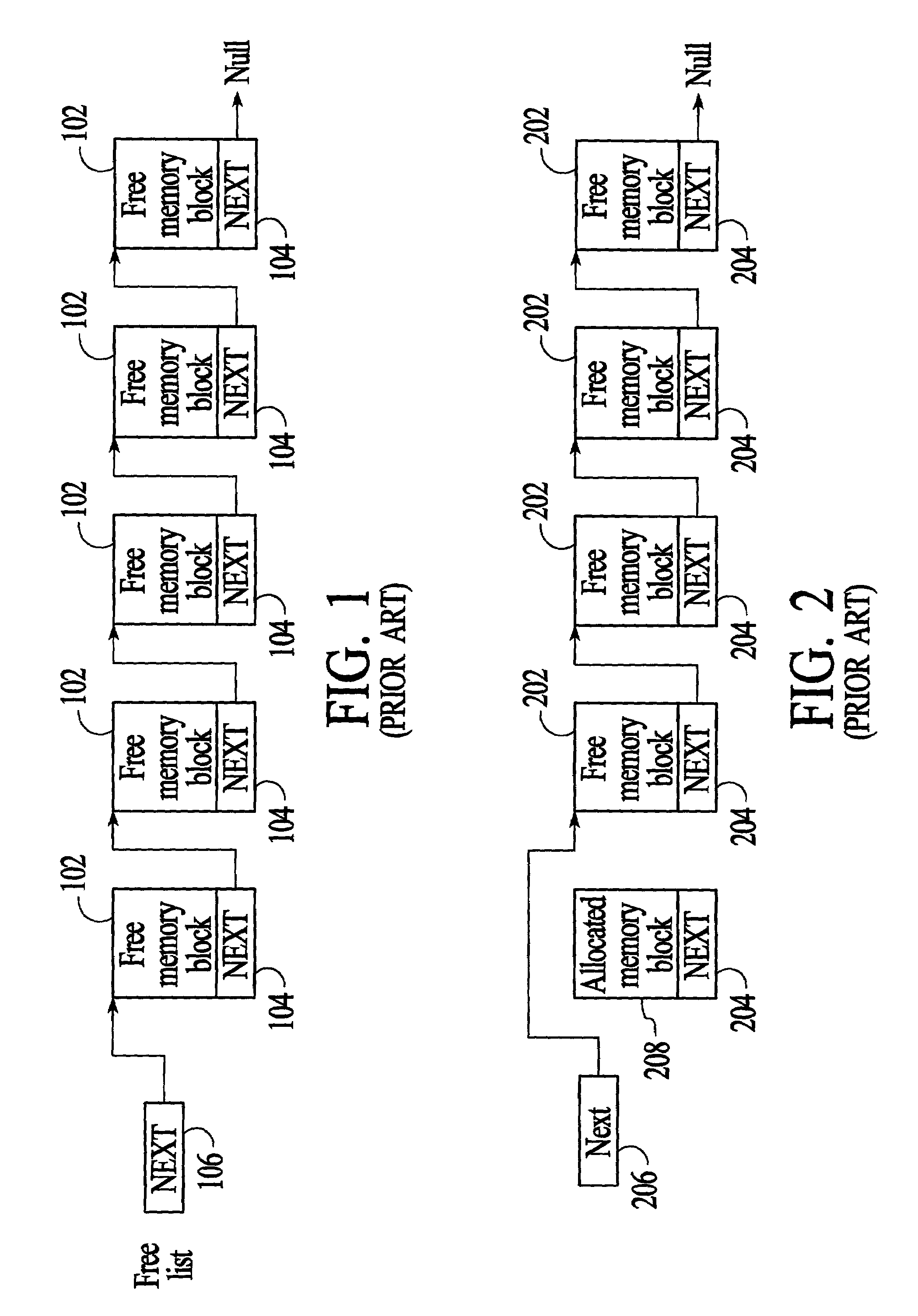Method, system, and computer program product for managing a re-usable resource with linked list groups
a technology of linked list and management method, applied in the field of managing reusable resources, can solve the problems of not being able to easily know the location of the previous element, not being able to efficiently manage the list of integers, and being unable to efficiently manage the single linked list. to achieve the effect of more memory efficien
- Summary
- Abstract
- Description
- Claims
- Application Information
AI Technical Summary
Benefits of technology
Problems solved by technology
Method used
Image
Examples
Embodiment Construction
[0050]The invention involves managing a pool of integers by dividing the pool of integers into groups of integers and initializing, in memory, doubly linked lists related to the groups of integers on an as needed basis in response to requests to allocate integers. If an initialized group of integers no longer includes any allocated integers, the doubly linked list related to the group of integers is deleted from memory. Initializing doubly linked lists related to groups of integers on an as needed basis and deleting doubly linked lists with no allocated integers is more memory efficient than techniques which pre-initialize memory for all of the integers in the pool. In an embodiment, the memory locations of the group-specific doubly linked lists are identified by a hash table that includes a unique hash table pointer for each one of the groups of integers. If the doubly linked list related to a particular group of integers is active, the hash table pointer for that group of integers...
PUM
 Login to View More
Login to View More Abstract
Description
Claims
Application Information
 Login to View More
Login to View More - R&D
- Intellectual Property
- Life Sciences
- Materials
- Tech Scout
- Unparalleled Data Quality
- Higher Quality Content
- 60% Fewer Hallucinations
Browse by: Latest US Patents, China's latest patents, Technical Efficacy Thesaurus, Application Domain, Technology Topic, Popular Technical Reports.
© 2025 PatSnap. All rights reserved.Legal|Privacy policy|Modern Slavery Act Transparency Statement|Sitemap|About US| Contact US: help@patsnap.com



